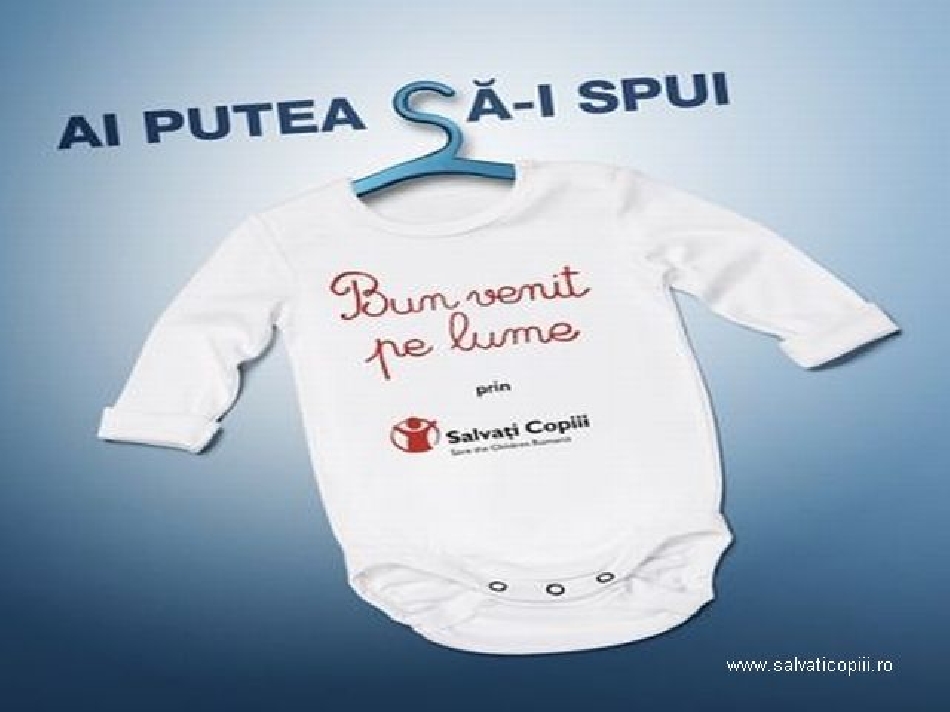The Welcome to the World Campaign
With 9.4% per 1,000 live births, Romania has the highest infant mortality rate in the European Union, the main cause being pre-term birth.

România Internațional, 12.06.2013, 12:54
According to doctors, one third of these deaths may be prevented through the development of mother and infant support programmes and by providing maternity hospitals and newborn wards with high-performance equipment.
Save the Children Organisation struggles to improve these figures, and has joined an international programme called Every One, conducted by Save the Children International and aiming at reducing mortality rates among children under 5 by 15% until 2015.
To this end, two years ago the Romanian organisation launched a large-scale project entitled Every Child Matters. As part of this programme, the organisation runs a fund-raising campaign called Welcome to the World. So far, this campaign has helped 15 maternity hospitals in Romania buy new equipment to save the children who were born prematurely. The funds collected last year by Save the Children Romania from individual and corporate donors exceeded one million lei. As many as 42 employees and 800 volunteers from across the country have become involved in this campaign to reduce child death rates.
At the end of the programme, Save the Children Romania was able to provide the Cantacuzino Hospital in Bucharest with a portable incubator and the Polizu Maternity Hospital with a medical ventilator worth 24,000 euros. Gabriela Alexandrescu, executive president of Save the Children Romania explains:
Gabriela Alexandrescu: “According to our estimates, the equipment we have offered will help save 327 newborns and will ensure a normal birth for 380 babies. Naturally, we would like this programme to go on.”
Across the country, the medical equipment in maternity hospitals is insufficient and obsolete. To make things even worse, there is a chronic shortage of medical staff, says Adrian Craciun, the head of the Neonatology Department of the Cantacuzino Hospital in Bucharest:
Adrian Craciun: “We are a small maternity ward. We only have 2,200 births a year, but over 20% of the infants in our care are premature babies, because newborns with problems are transferred here from other hospitals. Last week alone, we received three babies from three different hospitals, and two of them needed ventilation equipment. Unfortunately, we cannot take all of them in, because we don’t have enough beds. Our Intensive Care Ward only has 9 beds, and I’m afraid very soon we will not be able to take on any more transfers, because our facilities are insufficient. This is a serious problem, and I don’t know whether we can solve it.”
Under-funding remains a serious problem for the Romanian healthcare system. Adrian Craciun, the head of the Neonatology Department of the Cantacuzino Hospital in Bucharest says this year his unit received less money than last year for the four programmes it is implementing: the premature birth programme, the respiratory virus infection programme, the nutritional prophylaxis programme and a programme for the identification of hearing problems in newborns:
Adrian Craciun: “Last year we received 4 billion lei, and this year only 600 million. This is a huge difference. We are literally living on last year’s funds. We used this money to buy everything we needed, but all of a sudden we no longer received any funding. You cannot treat a newborn with thin air.”
The Health Ministry will rehabilitate and provide equipment for 20 maternity hospitals around the country, under a World Bank-funded programme, State Secretary Adrian Pana announced.
Adrian Pana: “This programme to rehabilitate maternity hospitals and provide them with equipment, which is financed by the World Bank, is a long-term programme. Some parts of it have been finalised, others are ongoing, and we are discussing a new World Bank loan for further investments, for medical equipment, among others. But I would like to make one thing clear: child mortality is not exclusively related to maternity hospitals. Child death rates are a complex indicator that is relevant for the stage of development of a nation. It is very important to have well equipped hospitals where mothers and newborns may receive adequate healthcare services. But it is also extremely important for children safety and health to be ensured outside hospitals as well. The public healthcare system and other systems may do a lot in this respect, and this will reflect in the drop of child mortality rates.”
“All children have the right to live. No one can take that right from them,” says the executive president of Save the Children Romania, Gabriela Alexandrescu, who added that the organisation would continue to raise funds this year, so as to make sure that as many healthcare units as possible may benefit from the equipment they need to care for premature babies.






























